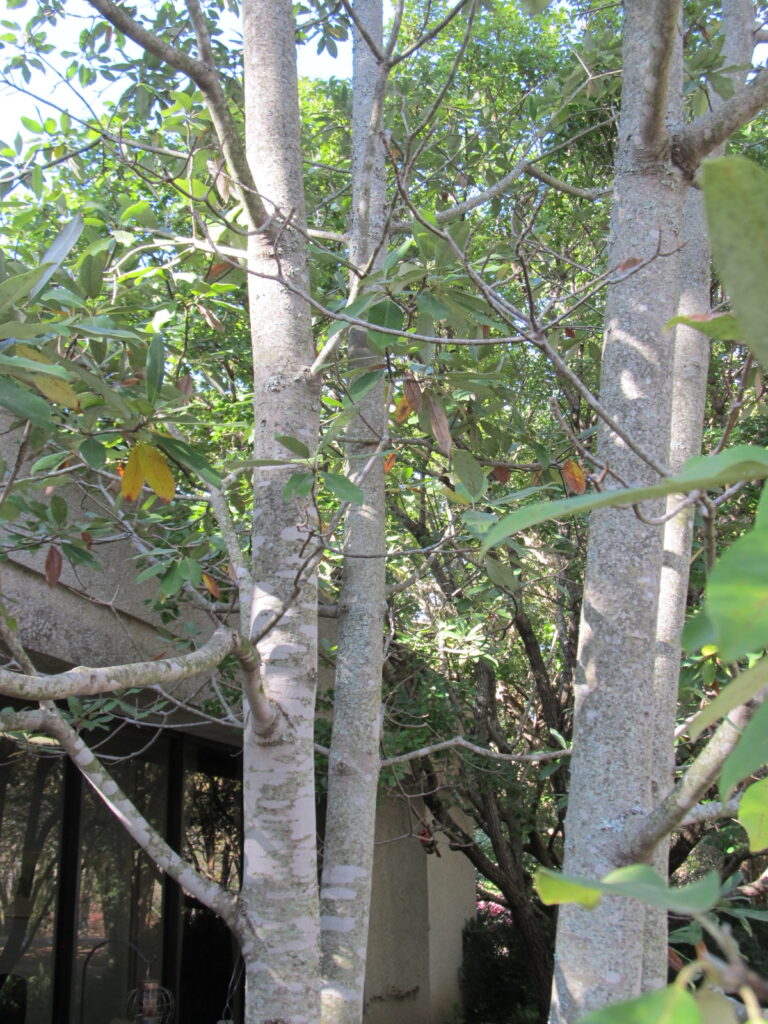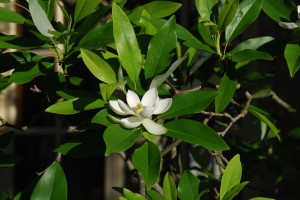Sweetbay, aka laurel magnolia, (Magnolia virginiana) is a U.S. native tree. This small to medium-sized native species often 20-30 feet tall and 15-20 feet wide as a large shrub or multi-stemmed small tree. Finding a 50-60 feet sweetbay near by a lake or pond near where you live is not unusual (USDA hardiness zones 5-9).
Sweetbay blooms from mid-May through June, with occasional flowers in July. The flower petals of magnolias are called “tepals” and sweet bay flowers consist of 8-10 tepals. The creamy-white blooms are 3-4 inches across and last three to four days. Numbers of open flowers are rarely abundant at any one time. On occasion their sweet lemony fragrance becomes quite evident in the late spring garden.
The glossy light-green leathery leaves are 4-5 inches long. A slight fluttering breeze exposes the silvery underside of the leaves. Foliage is reliably evergreen in USDA hardiness 7-9 and semi-evergreen in zone 6. ‘Green Shadow’ and ‘Moonglow’ are leading cultivars that exhibit slightly larger flowers, darker green leaves, and better winter hardiness.
In early fall green cone-like seed capsules burst open to expose bright orange to red seeds within. Seeds may be collected in late September and stratified (refrigerated) in moist sand over three months @ 32 to 41°F; or may be sown directly in the garden. Seedlings emerge from the soil the following June.
Unlike most magnolia species, sweet bay flourishes in moist soils, including those that are flooded for short periods. It prefers an organic rich, acidic soil; summer leaves may turn chlorotic (yellow) in iron deficient alkaline soils. Disease and pest problems are rare.
Sweetbay is well-suited for a small urban garden near a patio or deck. Cut foliage is often included in holiday wreaths and garlands, and in table and floral arrangements.



 Posted in
Posted in 
